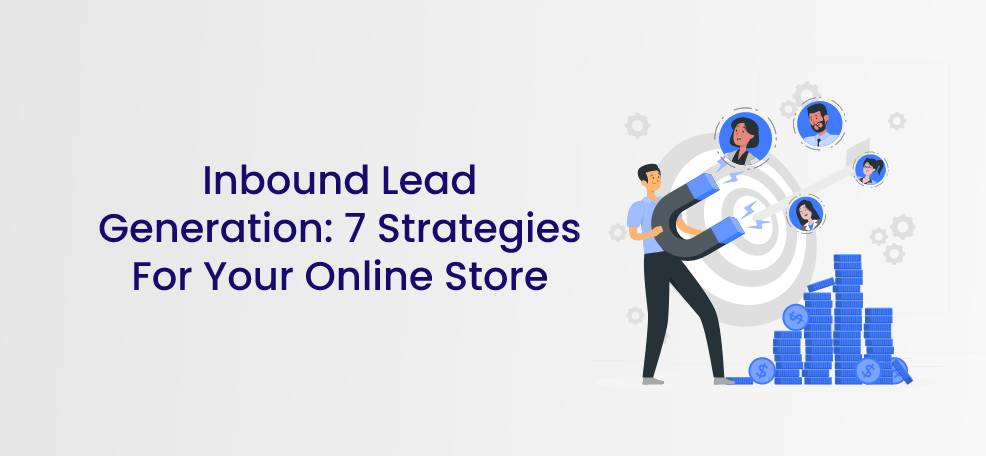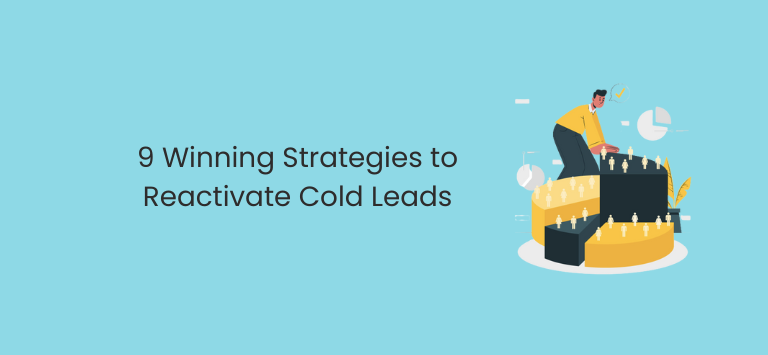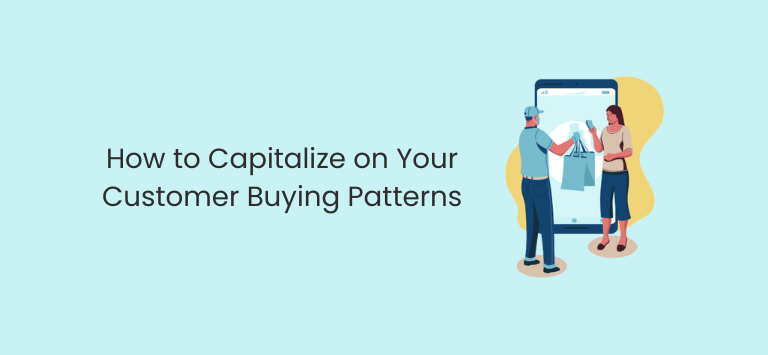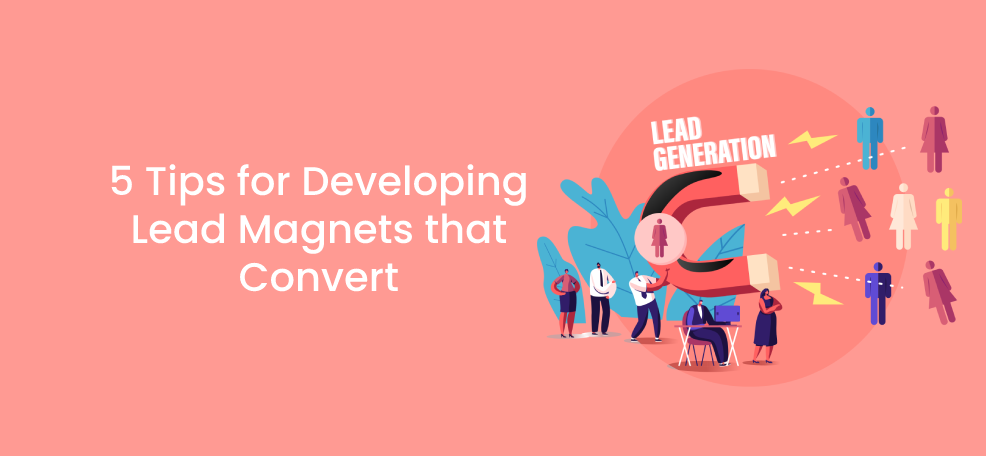If you run an online store, you’ll always be on the lookout for more customers. So you need to know the best lead generation strategies to expand your customer base.
This blog will explain the seven best inbound lead generation strategies and how to implement them into your business. The idea is to add value to your customers’ lives through a blog post, video, or podcast. In return, the potential customer gives you their email address, turning them into a lead. You can then use their email address to sell directly or send marketing content.
1. Study online customer behavior
If you know how customers use the internet, you can look for leads in the right places. According to Qiigo, 89% of consumers use search engines to conduct product research. So your online store should optimize its SEO strategy to increase lead generation through product reviews and product pages.
Another statistic to note is 72% of customers have the same level of trust in online reviews and personal recommendations. So including reviews on your product pages is an excellent way to generate inbound leads.
Qiigo also found that 78% of consumer purchasing decisions are based on social media posts made by companies. Having a solid social media presence and equipping it with the tools to collect contact information for lead generation is a must for your business.
Another necessity is having a good online experience, which is essential to 91% of customers. So make sure your online store gives value to the customer.
But how exactly do you study your customer’s online behavior? You can use heatmap tools to see which parts of your online store customers visit most frequently, where they drop off, and where they take action.
Heatmaps are a great way to get a visual representation of where the best leads are on your online store, so make sure to utilize them in your lead generation strategy.
Farnam Elyasof, Founder of Flex Suits
This screenshot shows a heatmap of the click frequency; the box is blue, indicating the part of the website isn’t ideal for lead generation.
Other valuable tools for studying online behavior are A/B testing tools and customer session replay tools. A/B testing tools allow you to test changes to your site by giving the test subject a choice between two lead generation strategies. Customer session replay lets you see exactly how customers use your online store, giving you great lead-generating insights.
2. Write quality blog posts
According to Business 2 Community, writing high-quality blogs helps generate 97% more links to the website, and you can turn these links into leads. But you can only turn links into leads if the blogs are captivating, informative, relevant, and high-ranking in Google SERPs, so make sure your blogs are high-quality and SEO optimized. You also need a mechanism to collect the potential leads’ contact information like a contact form or prize giveaway.
One tip for writing high-quality blogs for inbound lead generation is using CTAs. A good call to action will compel your potential lead to take action immediately. Placing the call to action toward the end of the blog is a good idea that generates traffic to your store. However, you can also determine the position of the CTA based on your blog design. For example, this CTA on Eachnight’s blog is placed on a sticky sidebar, which is also high converting.
Another tip for lead generation using blogs is time-delayed pop-ups. If your blog is high-quality, the reader will likely engage with a time-delayed pop-up and become a lead. Just make sure the delay is long enough for the reader to engage with the blog and find value.
But remember, your focus should remain on creating quality content that informs. If you’re struggling to write your blogs and need help to write better, be assured there are many resources to help you.
It’s also essential to grow your blog’s following as it has the potential to generate your leads. A good blog does not just bring traffic to your site; it also builds your credibility and establishes your brand as an industry thought leader.
3. Create video content
If you want to generate leads by creating video content, it goes without saying that the video needs to be relevant and high-quality. But what kind of video content should you create? Good ideas for videos include video testimonials of previous clients’ experience with the products, product overview videos, case studies of long-term benefits, and introductory videos with the business founder.
But whatever style you choose, the video needs to have an in-video contact form to gather certain information from viewers to turn them into leads. Depending on your requirements, the form may ask for the user’s email address or multiple data points, but the form needs to look clean and modern. Using a multi-step format to break the questions down will also prevent user fatigue and gives your leads an idea of their progress.
It’s also essential to consider when the contact form is offered. On longer videos or premium content, it can be advantageous to offer the contact form right away. But on a shorter video, it can be better to display the form after the ‘hook’ in the content. Placing the contact form at the end isn’t ideal as many users will stop watching before the end.
Optimizing the video content for the platform is also important. An optimized video will play better, look better on the platform, and will be more likely to actually work. Don’t let all your hard work go to waste by having a sub-optimal delivery of the video content.
4. Value user-generated content
User-generated content is content created by users, such as feedback, experiences, opinions, product reviews, and testimonials. Content that is generated this way gives the brand social proof that their products or services are high-quality. If customers are assured, they are more likely to engage with lead generation strategies. Valuing lead-generated content also makes users feel more valued. When users feel valued, they are more likely to engage as well.
But the user-generated content needs to be well integrated into your online store. Embedding the content onto the homepage or product pages is usually the best way to do it, but it depends on your situation.
Men’s grooming brand Meridian, for example, displays its products’ star ratings below the product name. Most customers will just look at the product images and star rating and click “add to cart”, but those ratings just don’t come out of nowhere. They’re generated using customer testimonials, which you can read by scrolling down.
Meridian’s marketing team also responds directly to each comment, which shows the value they put on user-generated content as a tool for engagement.
5. Be proactive on live chat
One way to capture leads on live chat is by greeting customers with an automated message. A popular message is ‘Hello, how may I help you?.’ A friendly greeting encourages the customer to engage with your store. Once a customer has engaged, the live chat operator can take over and assist the customer. After the customer has been taken care of, the contact information can be solicited and turned into a lead.
Alternatively, you can add an email opt-in box to your pre-chat required information. Asking for the email immediately means more customers are potential leads, but the success rate is lower than more qualitative strategies.
A case study of an online store selling printed plastic cards showed that the company saved thousands on lead generation by using live chat. The store saved around $12,800 per month on lead acquisition and advertisement costs since rolling out a live chat feature. Live chat was found to increase customer engagements through automatic pop-up messages. Also, live chat is simply faster than traditional communication methods like email and phone calls.
6. Build a strong email list
Email is a great way to generate leads. With a dynamic newsletter or email promotion and delivery system, you can target the right leads and deliver content right to their inbox. Once the content has been delivered to the inbox, the recipient can fill in the attached contact form and become a viable lead.
But you need to build a strong email list to do this. Offering an incentive in exchange for the email (known as a lead magnet) is an excellent way to build a strong email list. The right incentive depends on your online store, so you need to know your customers. For example, B2B customers are more responsive to free informational content, such as case studies or ebooks.
A well-designed landing page that adds value is a good way to attract email sign-ups. A good landing page has:
- A specific headline
- An image or video
- Bullet points explaining benefits
- A call to action with email sign up mechanism
- Social proof of the benefit of the email list
Just make sure your email content aligns with the content on the landing page.
7. Start a podcast
Podcasts are a great way to generate leads for your online store; we’ll look at a case study to see exactly how it’s done. Mind Pump is a health and fitness company selling online workout programs. They launched a podcast called Mind Pump that entertains and gives advice on health and fitness topics.
After publishing a large number of episodes and consequences amassing a large fanbase, they began directing their podcast fans to their free online guides. The free guides could be downloaded by entering a name and email address, turning the fan into a lead.
But it’s important to remember this only works if you add value and produce a good podcast. Also, if you refer your fans directly to your online store like in the example, your landing page has to be high-quality and accessible.
Summary
Generating leads for your online store doesn’t have to be difficult; you just need to target the right people the right way. Adopting these seven strategies for inbound lead generation is cost-effective and gets results, so put them in place today.
First, you need to study online customer behavior. Knowing how your customers use the internet helps you look for leads intelligently. Next, you need to write quality blog posts. A high-quality blog post can be used to collect email addresses, either at the end (using a strong call to action) or while the reader is reading with a time-delayed pop-up window.
You also need to create high-quality video content, start a podcast and find ways to value user-generated content. But make sure you’re proactive on live chat and have a strong email list as well.
All of these strategies add value for your customer in return for a hot lead. Both parties win, and it helps to grow your online store. So make sure you capitalize on your potential inbound leads right away and use these seven lead generation strategies for your online store.
Author’s Bio

Nicholas Rubright is the communications specialist for Writer, an AI writing assistant designed for teams. Nicholas has previously worked to develop content marketing strategies for brands like Webex, Havenly, and Fictiv.









